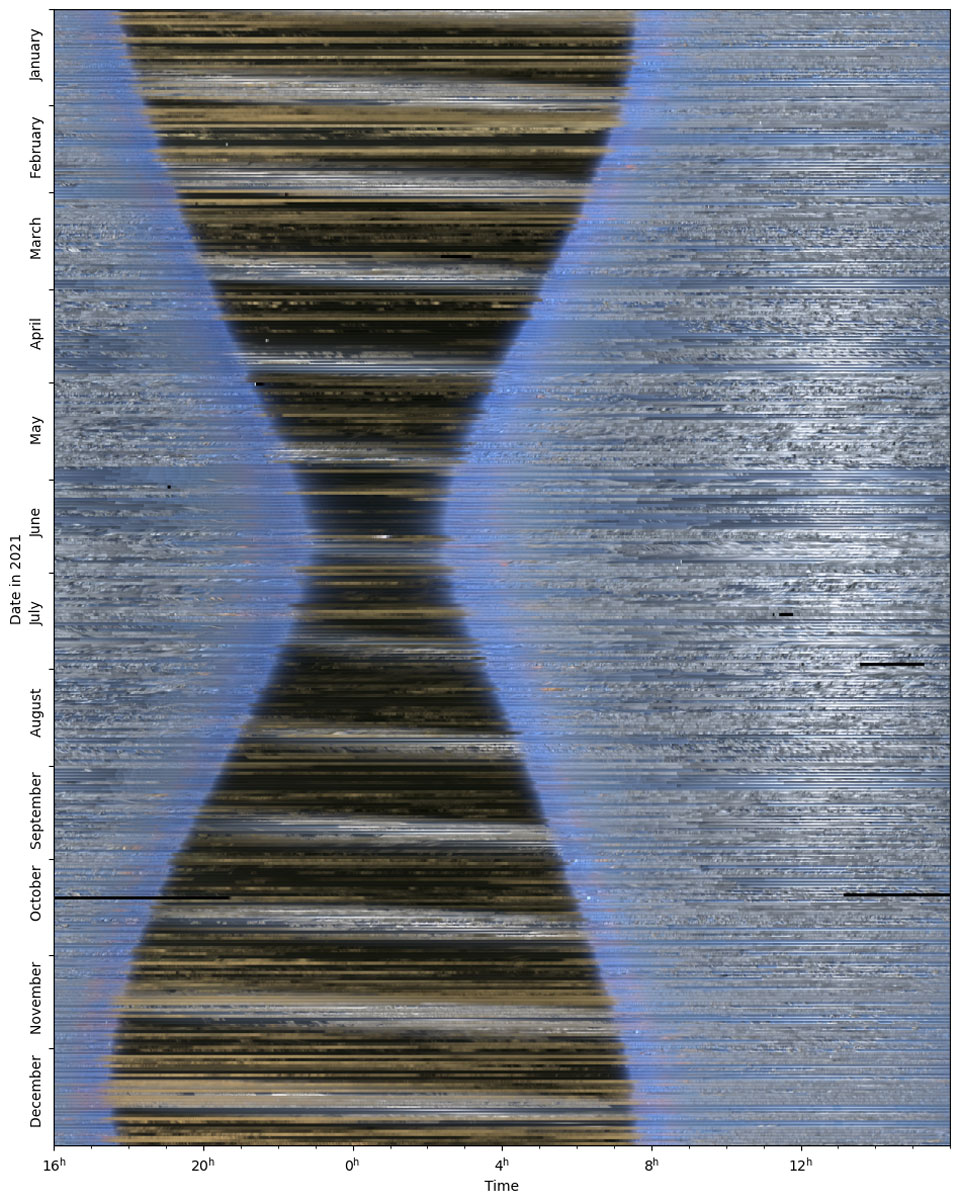2022年3月21日
The Sky in 2021
Image Credit & Copyright: Cees Bassa (Netherlands Institute for Radio Astronomy)
Explanation: What if you could see the entire sky — all at once — for an entire year? That, very nearly, is what is pictured here. Every 15 minutes during 2021, an all-sky camera took an image of the sky over the Netherlands. Central columns from these images were then aligned and combined to create the featured keogram, with January at the top, December at the bottom, and the middle of the night running vertically just left of center. What do we see? Most obviously, the daytime sky is mostly blue, while the nighttime sky is mostly black. The twelve light bands crossing the night sky are caused by the glow of the Moon. The thinnest part of the black hourglass shape occurs during the summer solstice when days are the longest, while the thickest part occurs at the winter solstice. Yesterday was an equinox — when night and day were equal — and the northern-spring equinox from one year ago can actually be located in the keogram — about three-quarters of the way up.
Follow APOD on Instagram in: English, Indonesian, Persian, Portuguese or Taiwanese
Tomorrow’s picture: a whale of an aurora
2021年的天空
影像提供与版权: Cees Bassa (Netherlands Institute for Radio Astronomy)
说明: 如果能同时见到整个天空在一整年期间的样貌,你会看到什么?上图就几乎完美的满足这项命题。在2021年期间,一部全天空相机每15分钟拍下一张荷兰上空的照片。然后取出这些照片的中心列,将之对齐并组合建构出这幅主题天光图(keogram);在其中,1月在顶部,12月在底部,而子夜紧贴在中心之左并垂直伸展。我们能见到什么?最显而易见的:白画的天空大抵是蓝的,而夜晚的天空大多是黑的。穿过夜空的12道光带,则是来自月亮的月华。黑色沙漏区最细的部分在夏至,因为那时白天最长,而最宽的部分在冬至。昨天是画夜等长的春分,而一年前的北半球春分,位在这幅天光图大约四分之三高的位置。 (译注:keogram 天光图;keogram源自因纽特爱斯基摩人对极光的称呼Keoeeit。在极光的keogram里,组合图的横轴是时间,纵向为在对应时间点拍下的极光,故keogram极光图呈现在24小时期间,该地的极光活动。而在这则apod里,译为“天光图”较适当。)
在Instagram上关注APOD: 英语、印度尼西亚, 波斯语、葡萄牙语 或 台湾语
明日的图片: a whale of an aurora







